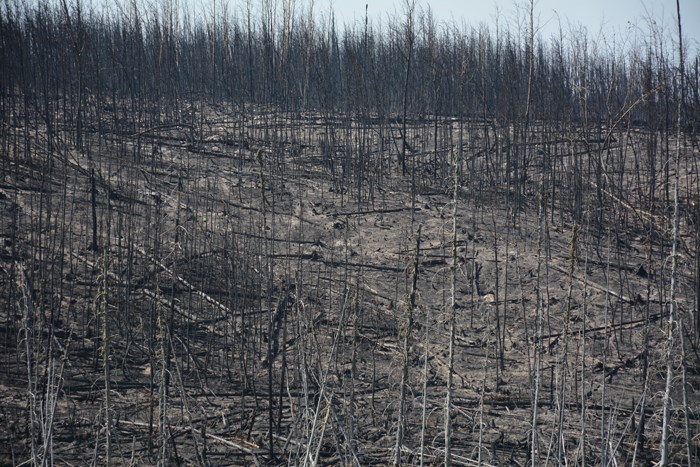Saskatchewan hasn’t seen a shortage of wildfires this summer. Most have been caused by uncontrollable acts of Mother Nature, such as lightning strikes, others have been purposely started by people.
These types of fires are referred to as arson fires because the people starting them are doing so deliberately and with the intention of causing damage.
According to Ken Ness, a senior investigator for the Ministry of Environment, conservation officers investigate approximately 50 arson-related wildfires every year throughout the wildfire season. Ness says that while it’s difficult to find the culprit of an arson fire because the fire can burn away evidence and there are seldom witnesses to the crime, it’s not impossible.
Conservation officers are specially trained on how to “read” a wildfire. Once they determine the ignition area or where the fire started, they can then begin to gather evidence left by the arsonist. Every year they carry out successful investigations that lead to arson charges under the Criminal Code and these charges come with serious consequences. Persons convicted of lighting an arson fire can go to jail for up to 14 years. They can also be held responsible to pay for the costs of suppressing the fire which, depending on the size of the fire, could be in the thousands or even millions.
With consequences being so severe, it’s hard to imagine why anyone would start these fires in the first place.
“There could be any number of reasons why someone chooses to commit arson,” said Ness “but it usually can be narrowed down to one of a handful of motives.”
One such motivator could be profit, wherein the arsonist believes they can generate a financial gain from lighting the fire. Another is revenge, where the arsonist would start a fire because they are upset with a certain person or group and they think of the fire as a form of pay back. One of the most common and most dangerous motives is vandalism. This motive would mean that the arsonist is lighting a fire for no other reason other than the fact that they have an opportunity to destroy something.
And destroy is exactly what a wildfire does. Even a small fire can quickly grow into something larger and more dangerous. The subsequent wildfires that happen due to arson is a serious problem because most of these fires are started near roads and trails that lead to populated areas, and in no time at all those fires can threaten the safety of an entire community.
However, communities themselves can take steps to reduce their risk of wildfire damage.
“Residents can do a lot of simple things around their homes to protect themselves and their property”, said Ness. He recommends regularly clearing leaves, pine needles and combustible debris from the roofs, gutters, porches and decks of you home. It’s also important to regularly mow and water the grass around your house and buildings, and to ensure that wood piles are at least 10 metres from any structures.
Anyone with information on arson-related fire can report it to the Ministry of Environment through their TIP line at 1-800-667-7561 or online at saskatchewan.ca/conservation.
Cash rewards will be paid out to those whose information leads to the conviction of an arsonist.




